The US dollar strengthened as renewed tariff concerns weighed on major currencies and commodities.
EUR/USD dropped to 1.0465 with trade tensions, while the yen weakened past 149 as markets awaited key Japanese data. Gold dipped below $2,910, pressured by a stronger dollar and weak Chinese demand. GBP/USD fell to 1.2660, driven by risk aversion and rising US yields. Silver declined to $31.60 as strong supply and lower demand offset rate-cut expectations.
| Time | Cur. | Event | Forecast | Previous |
| 13:30 | USD | Durable Goods Orders (MoM) (Jan) | 2.0% | -2.2% |
| 13:30 | USD | GDP (QoQ) (Q4) | 2.3% | 3.1% |
| 13:30 | USD | Initial Jobless Claims | 222K | 219K |
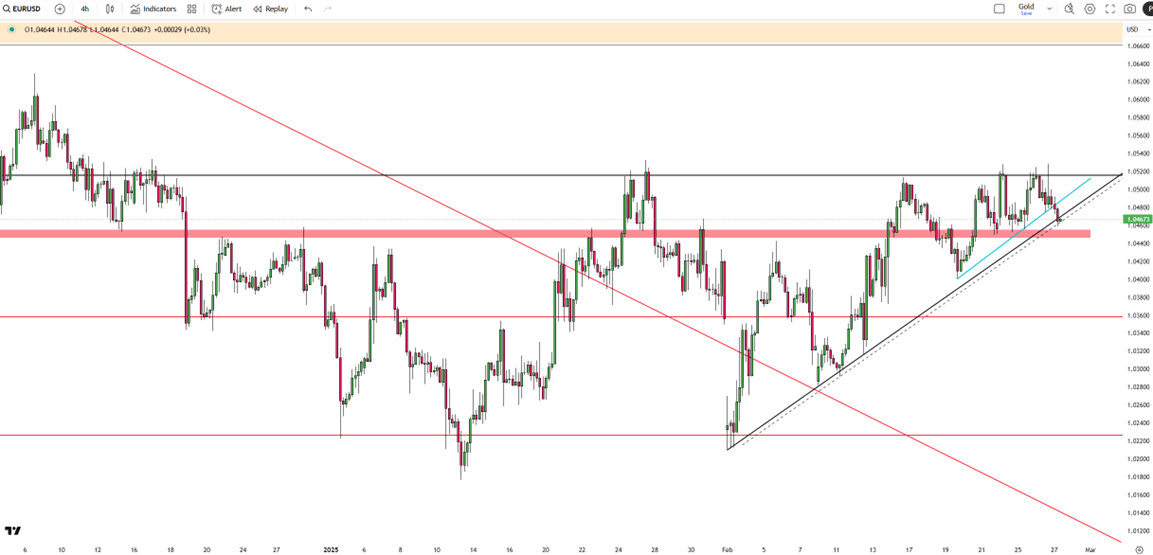
The EUR/USD pair fell to 1.0465 during Asian trading on Thursday as the euro weakened after renewed tariff threats from US President Trump. Investors await key US data, including Q4 GDP and weekly Initial Jobless Claims, due later today.
On Wednesday, Trump reaffirmed plans for 25% tariffs on Canada and Mexico, expanding them to Europe. EU officials called the move “unjustified” and vowed swift retaliation, adding pressure on the euro with the Eurozone’s economic struggles.
Concerns over US growth have fueled expectations for Fed rate cuts, with markets pricing in 58 basis points of easing in 2025. The CME FedWatch tool suggests rates will stay steady for now.
Resistance is at 1.0520, 1.0600, and 1.0650, while support is at 1.0450, 1.0350, and 1.0275.
| R1: 1.0520 | S1: 1.0450 |
| R2: 1.0600 | S2: 1.0350 |
| R3: 1.0650 | S3: 1.0275 |
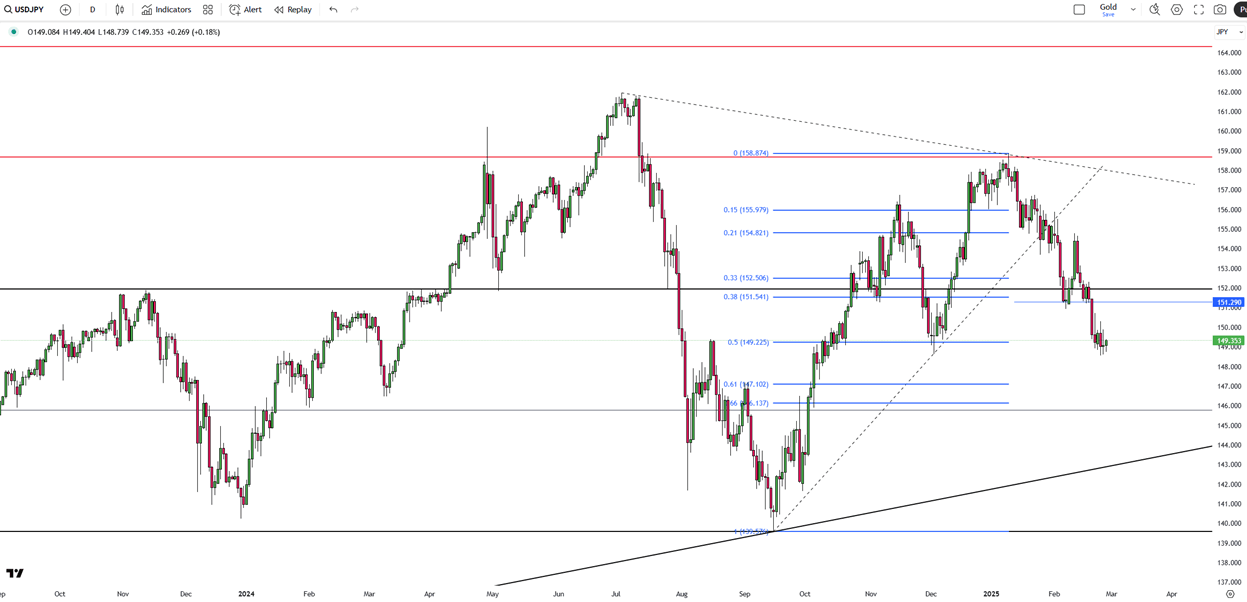
The Japanese yen weakened beyond 149 per dollar on Thursday, retreating from four-and-a-half-month highs as the US dollar strengthened amid renewed trade concerns. On Wednesday, US President Trump proposed a 25% “reciprocal” tariff on European autos and confirmed tariffs on Mexico and Canada will take effect on April 2, instead of March 4.
Despite the yen’s drop, it remains near multi-month highs, supported by expectations of further Bank of Japan rate hikes after strong Q4 inflation data. Investors now await key economic data on Friday, including industrial production, retail sales, and Tokyo inflation, for insights into monetary policy.
Resistance is at 154.90, 156.00, and 157.00, while support is at 148.60, 147.10, and 145.80.
| R1: 154.90 | S1: 148.60 |
| R2: 156.00 | S2: 147.10 |
| R3: 157.00 | S3: 145.80 |
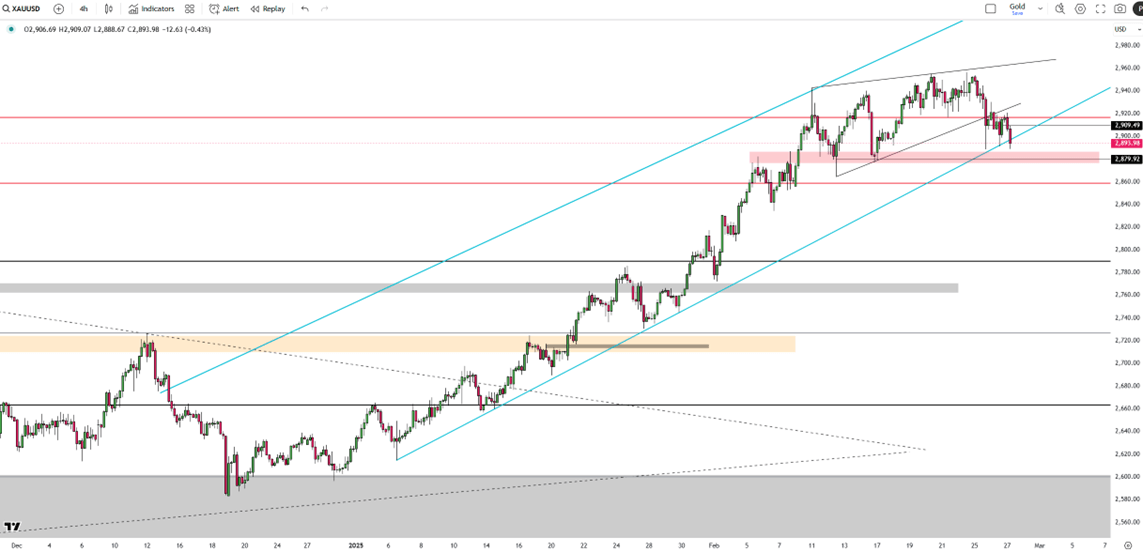
Gold fell below $2,910 per ounce on Thursday, extending its pullback from Monday’s record high of $2,950 amid a stronger US dollar. Q4 GDP and Friday’s PCE price index are expected to shed light on the economic future in the coming days. Weak US data has reinforced expectations of accelerated rate cuts.
Meanwhile, signs of weakening physical demand emerged as China’s gold imports via Hong Kong hit a nearly three-year low in January, while Swiss data showed a 99% year-over-year drop in gold exports to China.
Key resistance stands at $2,949, with further levels at $2,975 and $3,000. Support is at $2,880, followed by $2,830 and $2,760.
| R1: 2949 | S1: 2880 |
| R2: 2975 | S2: 2830 |
| R3: 3000 | S3: 2760 |
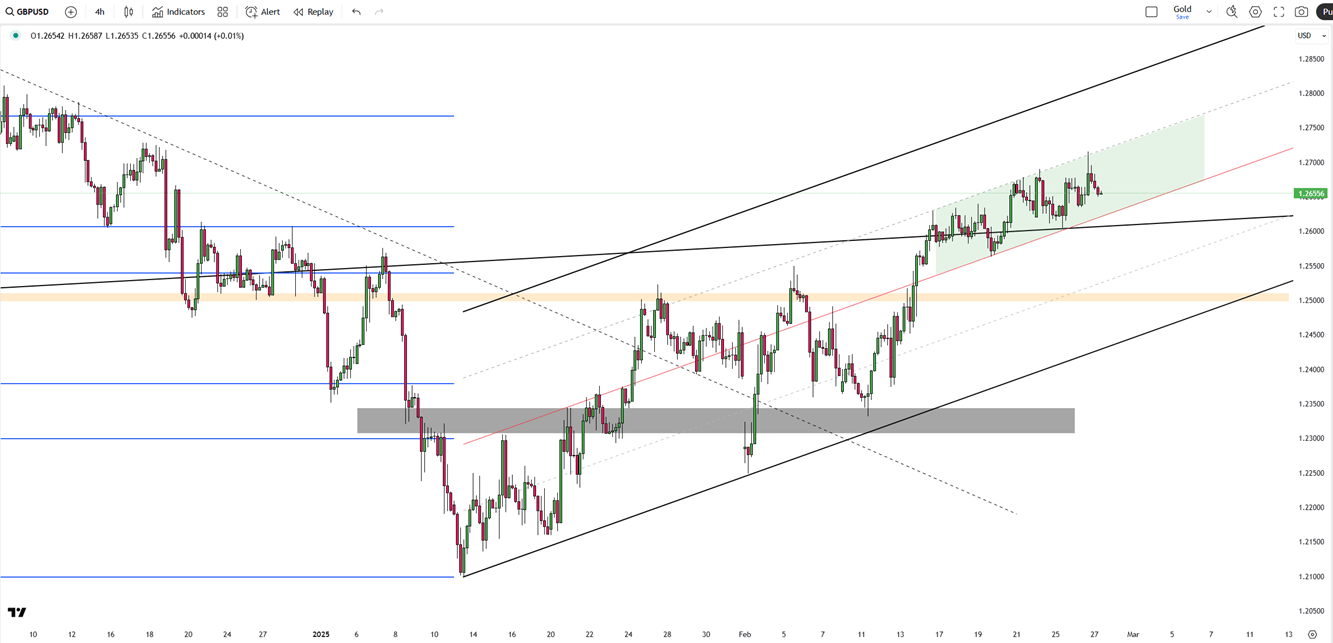
GBP/USD declined after two sessions of gains, trading around 1.2660 during Asian market hours. The pair weakened as the US dollar gained strength, driven by heightened risk aversion and rising US Treasury yields.
On the UK front, Bank of England (BoE) Monetary Policy Committee member Swati Dhingra noted that increased US tariffs could strengthen the dollar in the short term, potentially leading to some inflationary effects in the UK. However, she suggested that reduced global price pressures resulting from these tariffs would likely mitigate the overall impact on UK inflation.
The first resistance level for the pair will be 1.2680. In the event of this level's breach, the next levels to watch would be 1.2720 and 1.2770. On the downside 1.2340 will be the first support level. 1.2265 and 1.2100 are the next levels to monitor if the first support level is breached.
| R1: 1.2670 | S1: 1.2340 |
| R2: 1.2720 | S2: 1.2265 |
| R3: 1.2770 | S3: 1.2100 |
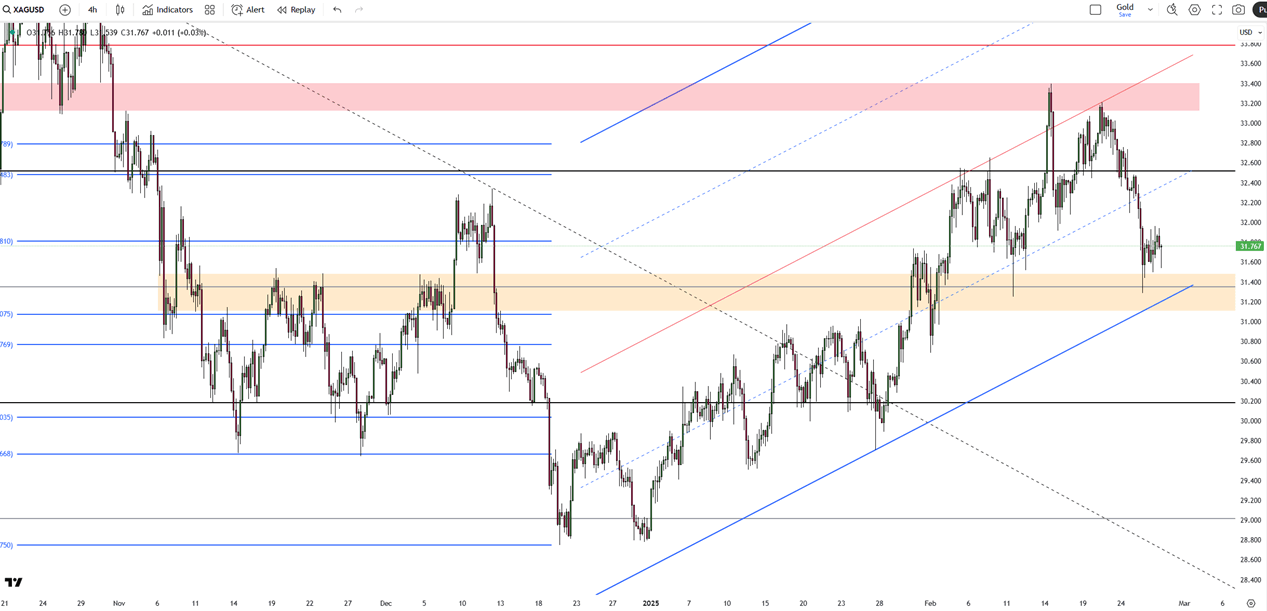
Silver fell to $31.60 per ounce on Wednesday, marking its fourth decline amid demand uncertainties and strong supply. Profit-taking also pressured prices, though silver remains up 10% year-to-date.
Hecla Mining Company, the largest US silver producer, reported a 13% increase in 2024 output, reaching 16.2 million ounces, the second-highest in its 134-year history. Meanwhile, US silver coin purchases dropped 27% yearly in January to 3.5 million ounces, the lowest January demand since 2018.
Soft US economic data increased expectations for further Fed rate cuts, offering some support to precious metals. Trade developments are also eyed as President Trump ordered a probe into potential copper import tariffs to stimulate US production.
Key resistance stands at 33.15, followed by 33.80 and 34.50. Support is at 31.40, with further levels at 30.90 and 30.20.
| R1: 33.15 | S1: 31.40 |
| R2: 33.80 | S2: 30.90 |
| R3: 34.50 | S3: 30.20 |
 Bond Market Pushback Takes Center Stage
Bond Market Pushback Takes Center StageMarkets are almost fully pricing in another Federal Reserve rate cut this week, yet the US bond market continues to move in the opposite direction.
Detail Central Bank Expectations Reset the Tone (8-12 December)
Central Bank Expectations Reset the Tone (8-12 December)Traders adjusted positioning before the Federal Reserve’s December decision and evaluated fresh signals from the ECB, BoE and BOJ.
Detail Futures Stall, 10-Year Yield Pushes Above 4.1% (12.08.2025)US stock futures were flat on Monday ahead of the Fed’s meeting, with markets pricing an 88% chance of a 25 bp cut on Wednesday.
DetailThen Join Our Telegram Channel and Subscribe Our Trading Signals Newsletter for Free!
Join Us On Telegram!